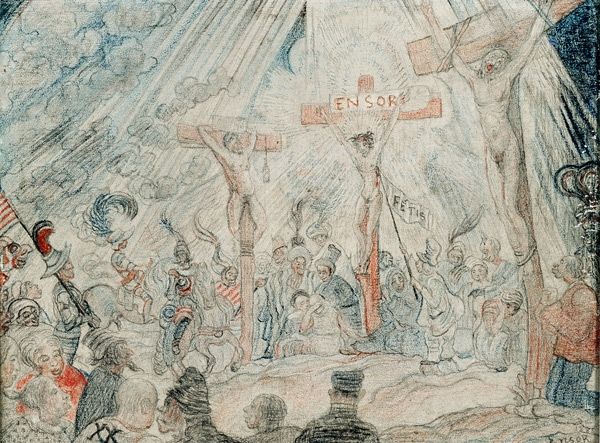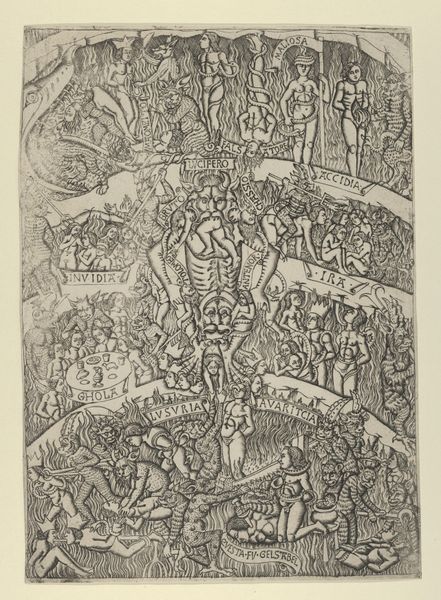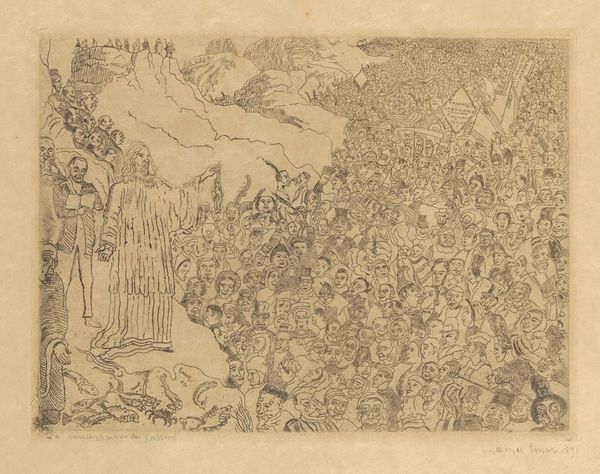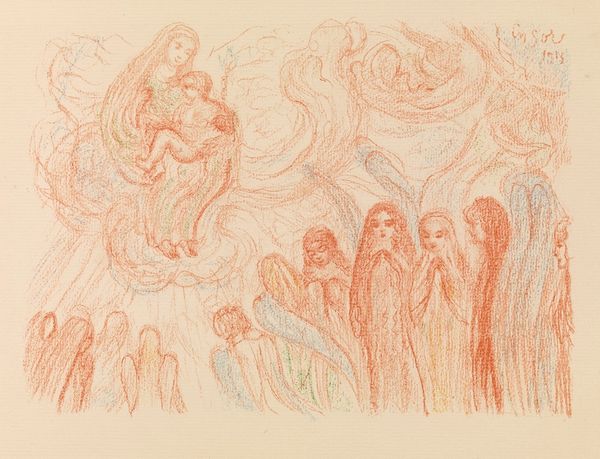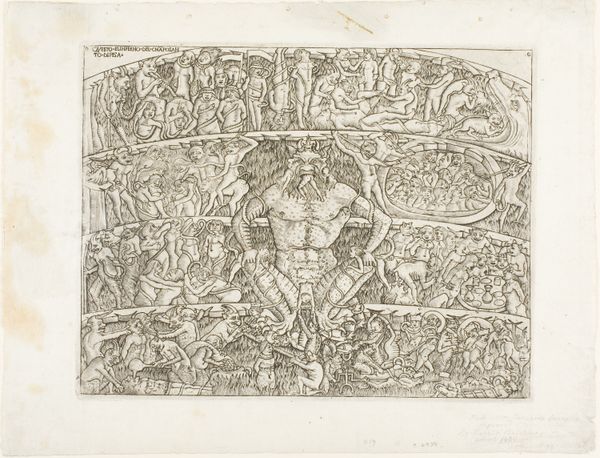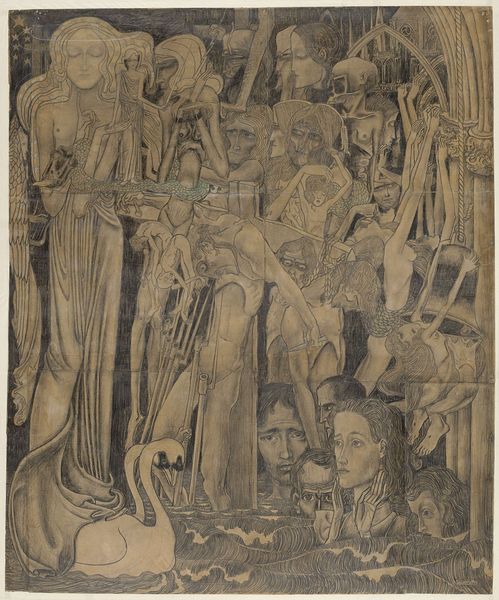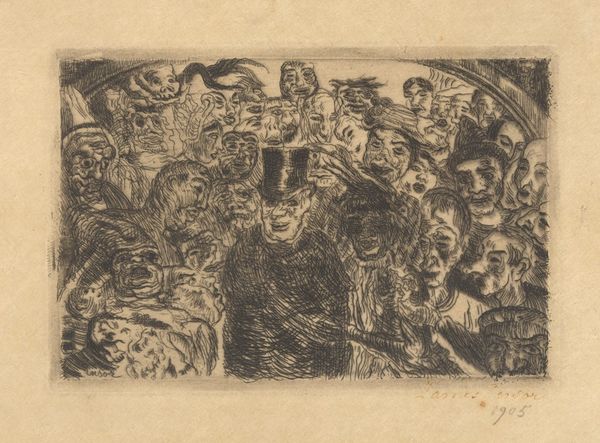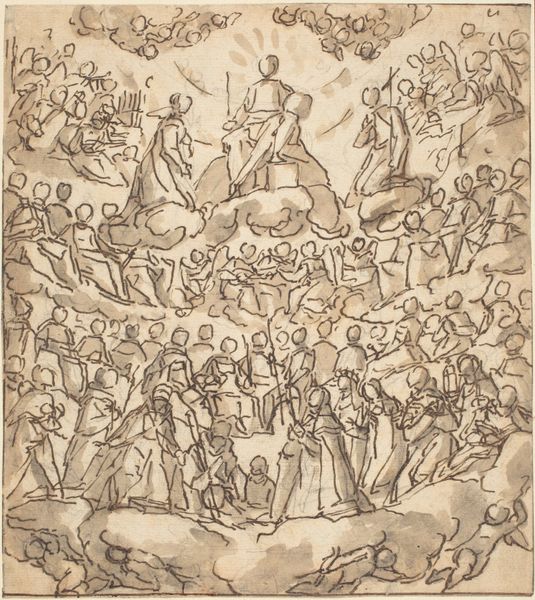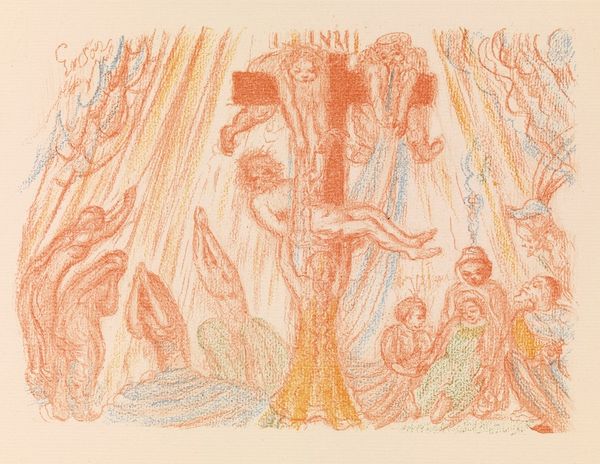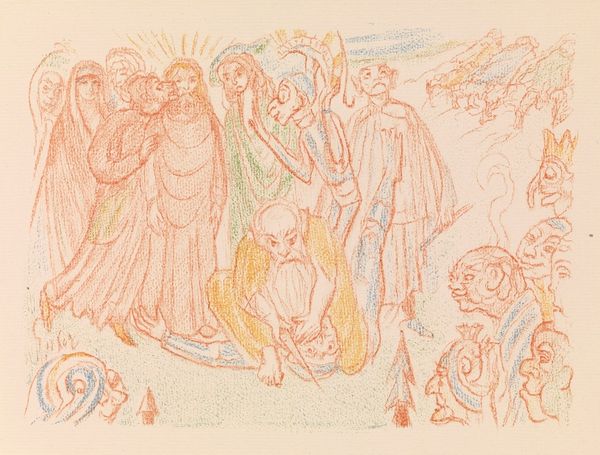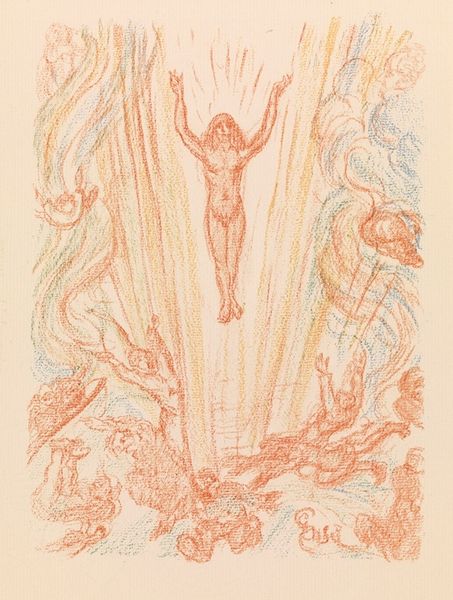
drawing, paper, ink, pen
#
drawing
#
narrative-art
#
ink painting
#
pen drawing
#
figuration
#
paper
#
ink
#
symbolism
#
pen
Copyright: Public Domain: Artvee
Editor: We're looking at James Ensor's "Christ Descending to Hell," made in 1895 using pen and ink on paper. The detail is incredible, almost chaotic. What catches your eye about it? Curator: The raw, almost frantic mark-making is the key here. Ensor's choice of readily available materials – pen, ink, and paper – democratizes the creation. This wasn't some precious oil painting made for a wealthy patron. It's a drawing. He bypasses the traditional art world power structures. The labor is visible, isn't it? The sheer density of lines speaks to a focused intensity. Editor: Absolutely. There's a feverish quality to it. So you're seeing the *means* of production as part of the meaning? Curator: Exactly! Ensor is questioning high art traditions. The grotesque faces, seemingly mocking authority figures, suggests a deep social critique. This drawing isn’t just about depicting a religious scene; it’s about challenging the status quo, using easily accessible materials to do so. It questions not only the subject, but art production's elitism. Editor: I hadn't considered the deliberate choice of everyday materials. Is he commenting on the church's own material wealth, perhaps? Curator: Possibly. The roughness could also be about challenging idealized representations of religious figures. He's reminding us of the *physicality* behind even the most spiritual subject. How this was *made* is inseparable from what he is showing us. Editor: I see. Thinking about the material process really shifts my perspective on the overall message. Thank you! Curator: My pleasure. It's about understanding art not just as representation, but as a product of specific social and material conditions.
Comments
No comments
Be the first to comment and join the conversation on the ultimate creative platform.
